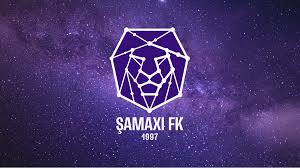The UEFA Europa League is one of the most prestigious club competitions in European football. Its rich heritage, competitive format, and diverse array of participating teams from across the continent make it a captivating tournament that attracts millions of fans every year. This blog post aims to provide an in-depth overview of the UEFA Europa League, exploring its history, structure, significance, and the impact it has on clubs and players alike.
History of the UEFA Europa League
The UEFA Europa League has a storied past that reflects the evolution of European football. Initially launched as the UEFA Cup in 1971, this competition has undergone several transformations, including its rebranding in 2009. Understanding its history provides context for the current landscape of the tournament and highlights its importance within the broader framework of European football.
Origins of the Tournament
The UEFA Cup was initiated in response to the growing popularity of European club football. Prior to its inception, European teams had limited opportunities to compete beyond their national leagues. The creation of the UEFA Cup aimed to provide more clubs with a chance to showcase their talent on a continental stage.
In its early years, the tournament was known for its knockout format, which allowed teams to face off in two-legged ties. This format not only increased excitement but also enabled clubs from smaller leagues to compete against some of Europe’s biggest names. It was a revolutionary step toward democratizing European football.
Evolution Over the Years
As the tournament gained traction, several changes were made to enhance its appeal. In 2000, the UEFA Cup was merged with the Intertoto Cup, further expanding the number of participating teams. The merger aimed to create a more inclusive tournament where teams from less prominent footballing nations could also vie for glory.
In 2009, the UEFA Cup was rebranded as the UEFA Europa League. This change reflected a shift in focus toward promoting not just the competition itself, but also the spirit of inclusion, diversity, and competitiveness. The Europa League became a platform for clubs to showcase their unique identities, while still striving for excellence on the pitch.
Notable Moments in History
Throughout its history, the UEFA Europa League has witnessed countless unforgettable moments. From thrilling matches to stunning upsets, the competition has consistently delivered drama and excitement.
One of the most iconic matches occurred in 1984 when Tottenham Hotspur faced Anderlecht in the final. The game ended in a dramatic penalty shootout, highlighting the intense pressure and passion that accompanies such high-stakes encounters. The ability of the tournament to produce such nail-biting finales is a testament to its significance in the world of football.
Another remarkable moment came during the 2010-2011 season when FC Porto, under manager André Villas-Boas, dominated the tournament, winning the trophy with style and flair. Their attacking play and tactical acumen showcased the evolving nature of football, elevating both the team and the competition’s profile.




